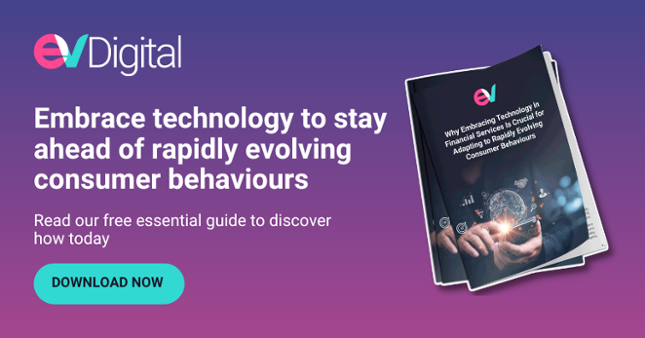Why Digital Financial Inclusion Needs to be the Focus of Your Online Advisory Services

In this article, we discuss the advice gap, financial advice inclusion, how you can use fintech to provide digital financial inclusion, and why digital financial inclusion should be the focus of your online advisory services to harness the opportunities that digital financial inclusion provides.
Traditional financial advice caters to a small percentage of the population who can afford these services, resulting in a lack of access to financial advice services for many consumers.
What is the financial advice gap?
The financial advice gap refers to the unequal distribution of financial advice, guidance and resources, particularly among people with low to moderate income levels. This often results in a lack of access to financial services, which can negatively impact financial well-being and prevent individuals from reaching their financial goals.
Historically, the financial services sector has catered to the very wealthiest clients, which tends to be the older generation, meaning millions of young people miss out on the help they need – whether that’s ‘capital A’ advice (i.e. financial planning provided by a regulated financial adviser) or just general financial education.
What is financial advice inclusion?
Financial advice inclusion refers to providing high-quality, affordable financial advice and guidance to individuals and communities who are otherwise excluded from such services due to various factors such as income level, location, or social status. Financial advice inclusion aims to increase financial literacy, help individuals make informed financial decisions, and improve their financial stability and well-being.
Digital financial advice can play a significant role in closing the financial advice gap by providing access to financial advice and guidance to a wider audience, including those who may not have access to traditional financial services or financial advisers. Such services should be suited to clients’ needs and delivered responsibly, at a cost both affordable to clients and sustainable for providers. By leveraging technology, digital financial advice can reach a larger and more diverse population at a lower cost, helping more people access the financial advice they need.

How you can use fintech at the forefront of your advice service to provide digital financial inclusion
By utilising fintech at the forefront of financial advice services, it is possible to promote financial inclusion and empower individuals to take control of their financial future.
Through automation, fintech can make financial advice more efficient, cost-effective, and scalable, providing a convenient and affordable way for individuals to receive financial advice and support. Furthermore, fintech can leverage algorithms and artificial intelligence to provide personalised financial planning, investment recommendations, and financial education resources, helping individuals make informed financial decisions, and thus promoting digital financial inclusion.
Fintech can provide a spectrum of advice options for consumers, including guidance, digital self-serve, hybrid, and traditional advice:
- Guidance - Guidance is used to provide education while a client researches. Here, individuals can discover information (‘Facts’) about investments and financial planning and, through modelling alternatives, set realistic ‘Objectives’ for their financial plans.
- Digital advice - ‘Self-serve’ digital advice provides a ‘Recommendation’ and an ‘Explanation’ in the form of a suitability report for simple advice needs. Algorithms generate the advice, and advisers provide no planned intervention or support. Therefore, clients have access to advice 24/7.
- Hybrid and traditional advice - Technology is used to make the process more efficient, freeing up more time for the advisers to potentially service more people in the advice gap. With hybrid advice, increasing levels of adviser support are provided where advisers can walk clients through their suitability reports and explain the recommendations made. With traditional advice, this is necessary for more complex advice where the role of the adviser will be essential.
Why financial inclusion should be the focus of your digital approach to help close the advice gap
By adopting technology in your financial advice process, you can harness the opportunities that digital financial inclusion provides. Therefore, the following points should be the main reasons to embrace digital financial inclusion within your firm.
Affordable advice for better accessibility
By using technology, advisers can effectively offer advice more cost-effectively for those who normally can’t afford advice. Advisers and institutions can provide high-quality advice at a lower cost, making financial advice more affordable and accessible to a wider range of individuals.
The FCA is concerned that holding cash for the long term can be detrimental to the client as it is eroded by inflation. This is only one aspect that advice can help with, but without a mass market scalable solution, it will remain only those with the most assets can afford a full advice service that will benefit from personalised financial advice.
Providing advice to the children of your clients
By adopting technology in your financial advice process, you can serve the children of your clients so that when they inevitably come into their inheritance, you are already guiding them through their financial journey. This reinforces the ‘sticky’ lifetime value that technology can facilitate regarding technology-enabled financial advice.
Additionally, digital financial advice can make the process of inter-generational wealth transfer smoother, more efficient, and more accessible. Providing a clear and concise overview of an individual's financial situation will make it easier for individuals to understand their financial position and make informed financial decisions.
You can reach new markets
As digital financial advice has a low barrier to entry, it can reach a larger and more diverse client base than traditional financial advice. This allows financial advisory firms to expand their market and reach new audiences by making financial advice more accessible, convenient, and personalised.
You can service individuals online
Digital financial advice can be accessed from anywhere, at any time, through a smartphone or computer, making it easier for clients to receive the advice they need when they need it. Therefore, for individuals unable to receive financial advice face-to-face, the self-serve element of digital financial advice enables them to receive it online 24/7.
For example, receiving real-time financial advice delivered as a notification on your smartphone is beneficial for prompting timely and proactive action. For example, if the performance of an investment plummets, you can be notified immediately and start the process of changing that investment. Or, if a new investment product becomes available that aligns with your objectives, you can immediately start exploring adding that option to your portfolio.
The client gets better visibility and engagement in their planning
Advisory firms that can provide transparent, 24/7 services, such as access to client portals with real-time valuations, will increase their clients’ awareness and understanding of their financial position. This will give the client better visibility in their planning, promoting better financial decision-making.
Summary
As you can see, by focusing on digital financial inclusion as the focus of your online advisory services, you can help to close the ‘advice gap’ by serving a diverse client base that traditional advice does not cater for. Doing so will enable you to expand your market share, helping you achieve your business goals.
EV’s digital and hybrid advice solution can help your firm close the advice gap by using a digital advice approach to create financial inclusion and giving more individuals access to the advice they need when they need it.
